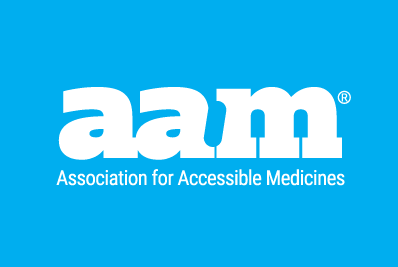The history of pharmaceutical competition in the U.S., especially as it concerns competition from high-quality and lower-cost generic drugs, is littered with instances in which branded manufacturers have attempted—with some success—to delay the Food and Drug Administration’s (FDA’s) approval of generic drugs in an effort to maintain monopoly pricing of their own branded products. This is done not only through the patent system, but also by exploiting complicated scientific issues and FDA processes.
An example is the abuse of the FDA’s so-called “Q1/Q2 sameness” requirement for certain drug products. It’s yet another “shenanigan”—a term used by former FDA Commissioner, Dr. Scott Gottlieb—that has continued to cost the U.S. healthcare system billions of dollars, all while being cloaked in scientific jargon. And it’s a maneuver that has delayed generic competition and in particular competition for critical complex products—a growing category of medicines that have complex active ingredients, formulations, or routes of administration—that are frequently expensive and desperately require generic competition.
In short, the FDA’s Q1/Q2 sameness requirement is this: FDA requires, with limited exceptions, that generic drug manufacturers mimic the brand-name drug formulation for certain formulations (e.g., eye, ear, dermatological products, injectables, and certain complex oral formulations). A proposed generic drug formulation meets these requirements, i.e., is Q1/Q2 to the brand-name reference product, if it contains the same inactive ingredients (Qualitatively the same, or Q1) in essentially the same concentration (Quantitively the same, or Q2). But if a generic drug fails to meet this FDA requirement, then the FDA can refuse the generic drug application out of the gate when it is submitted, or worse—refuse the drug years later when the FDA may be poised to make an approval decision, causing the generic drug manufacturer to either abandon the drug or go back to the formulation drawing board.
While the Q1/Q2 sameness requirement seems simple enough, it is not. Brand-name drug manufacturers have increasingly claimed that the inactive ingredients and the amounts of them used in their products are trade secrets. And they are doing so despite FDA regulations saying that this information must be publicly disclosed on drug labels for certain products. This is not merely a hypothetical concern. Indeed, Q1/Q2 sameness delayed critically important generic drug competition for blockbuster products like the dry eye drug Restasis. It took FDA 9 years to approve a generic version of Restasis because of asserted formulation trade secret claims by the brand-name manufacturer, Allergan. During that time, U.S. patients and payers were shelling out a lot for the extraordinarily expensive brand-name drug even though the relevant patents on Restasis had long been invalidated or expired.
This assertion of trade secret protection has required generic manufacturers to essentially play a protracted guessing game with FDA on Q1/Q2 sameness – all the while, patients wait for lower cost competition. Indeed, in response to this gaming, FDA’s practices require generic drug manufacturers to follow an administrative approach to identify an acceptable formulation. Specifically, under the FDA’s so-called “Controlled Correspondence” process, generic drug manufacturers may propose up to three formulations in a single request for the FDA to review and indicate whether any of the proposed formulations would be accepted in a generic drug application.
There may be thousands of possible formulation combinations. Thus, generic drug manufacturers often must submit multiple rounds of Controlled Correspondence with slightly tweaked formulations until the FDA accepts one of the proposed formulations. This process eats up valuable time and resources—for both generic drug manufacturers and the FDA—and ultimately delays the submission and approval of generic drugs. And because of brands’ assertions of trade secret protection, generic manufacturers can receive no guidance from FDA: they are not told to go up or down on an inactive ingredient and they are not told of the amount of any deviation. Indeed, FDA’s guidance states that FDA “does not intend to provide clarification on why a formulation is not Q1/Q2 the same as the RLD.” To make matters worse, FDA has sometimes changed what it considers to be Q1/Q2 late in the application process—and after years have been spent trying to bring lower-cost generics to market. In short, generics have been sent back to the starting line.
At the end of the day, but only after a lot of spilled ink, wasted resources and unnecessary red tape, FDA ultimately confirms the required formulation for a tenacious generic drug manufacturer. If that’s the case, then why not cut through that red tape to save time and money and accelerate generic drug accessibility and the affordability that comes along with it? Fortunately, there is a solution in sight, and one suggested by FDA itself!
Legislation advocated by FDA in the Agency’s most recent budget proposal would provide a much-needed fix to end the shenanigans. Specifically, the Increasing Transparency in Generic Drug Applications Act, which has passed both critical Senate and House committees, would authorize FDA to cut through the bureaucratic red tape and disclose to a generic manufacturer the ingredient or ingredients that cause a proposed generic drug formulation not to be Q1/Q2 the same as the brand-name reference product formulation and, if necessary, the amount required for an ingredient to be quantitively the same as the brand-name reference product. Passage of the bill would save the U.S. healthcare system more than $800 million over 10 years, and bring lower-cost medicines to patients sooner.
Congress needs to act now to clarify and codify the FDA’s authority to disclose Q1/Q2 sameness information to generic drug manufacturers, and to avert a legal challenge to the FDA’s current regulations and process that could further slow generic drug access and availability. Absent clarity from Congress, generic drug approval deadlines may be delayed even further, and U.S. patients may have to wait longer and pay more for drug products that are poised for lower-cost generic competition.

